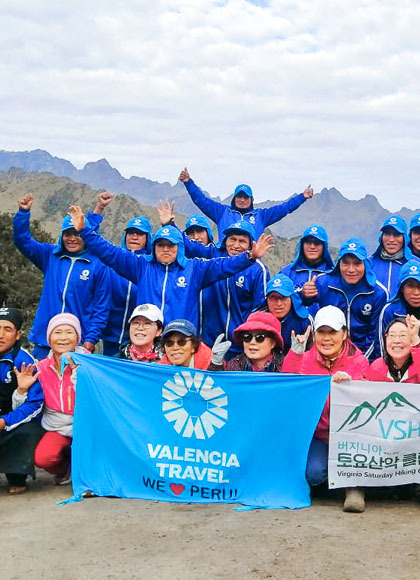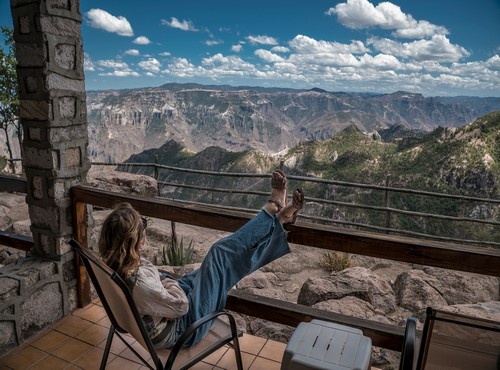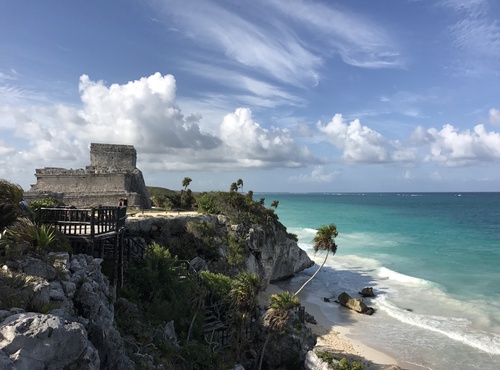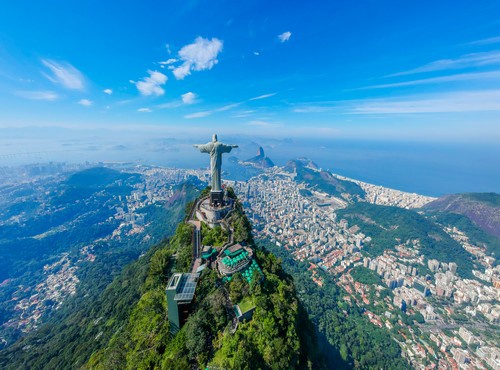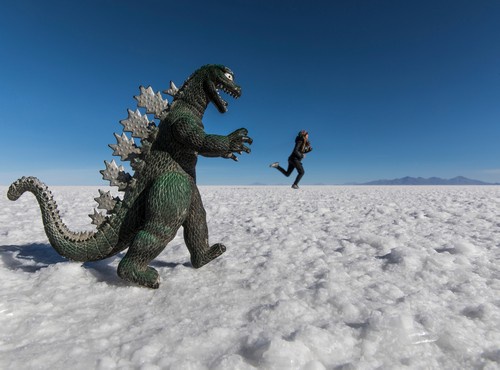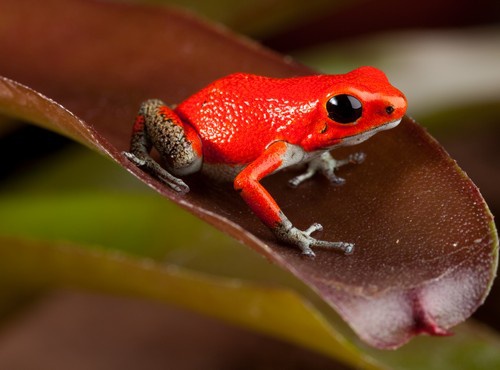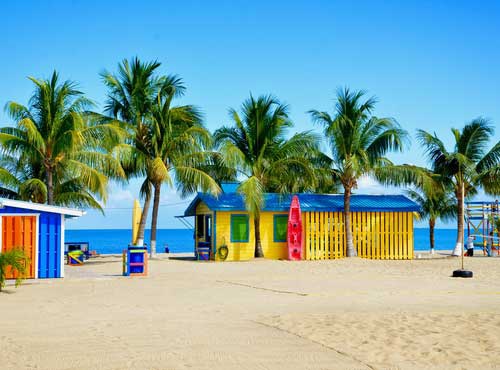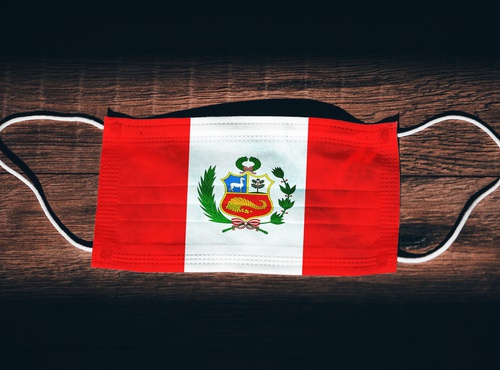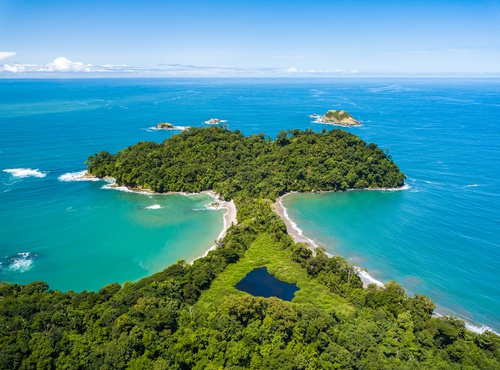
Written by:undefined undefined
Published: 24-10-2022
Hike through spectacular volcanic landscapes and stay with an indigenous family in the Ecuadorian Amazon on this unique tour around Ecuador. Starting in colonial Quito, you'll head to the well-known indigenous market of Otavalo for an arts and craft shopping adventure. Visit Peguche, known for its native weavers, visit a wind instrument workshop, and spend the night in a traditional hacienda. Visit the Guango hummingbird sanctuary to see these minute birds in all their glory before spending a night with an Indigenous family in The Amazon. We then visit the Avenue of Volcanos, home to Ecuador's most geothermally active peaks. Continue to Baños, where you can ride the Swing at the End of the World and marvel at majestic waterfalls before heading to the highest volcano on the planet, Chimborazo. Then ride the Devil's Nose train to Cuenca and visit the ancient archaeological site of Ingapirca. Discover more about Cuenca and enjoy this colonial city in southern Ecuador before returning to the capital. This tour encompasses the best of mainland Ecuador on a ten-day journey from the Amazon to The Andes.
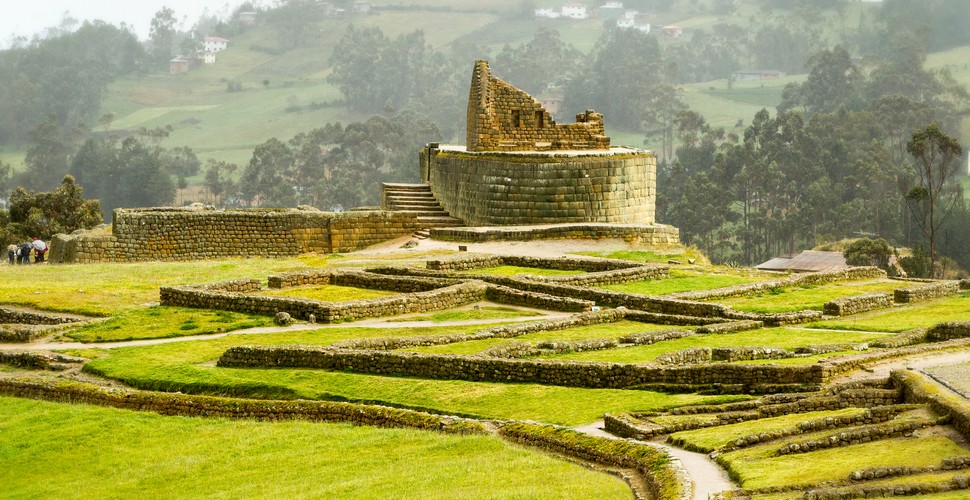
Ingapirca Ruins
Quito
With its narrow cobblestone streets and white-washed buildings huddling beneath a skyline of extravagant steeples and cupolas, Quito was the first city ever to be named a UNESCO World Heritage Site. Its compact colonial core hides a wealth of architectural and historical treasures around almost every corner, and a short walking tour is an ideal way to begin exploring. Quito's historic center is one of the largest and best-preserved in the Americas. You'll visit all the most significant sights, including the monastery of San Francisco, the main plaza with its cathedral and governmental palace, and the Basilica del Voto Nacional, the best known for its quirky gargoyles representing the native animals of Ecuador, from anteaters to marine iguanas.
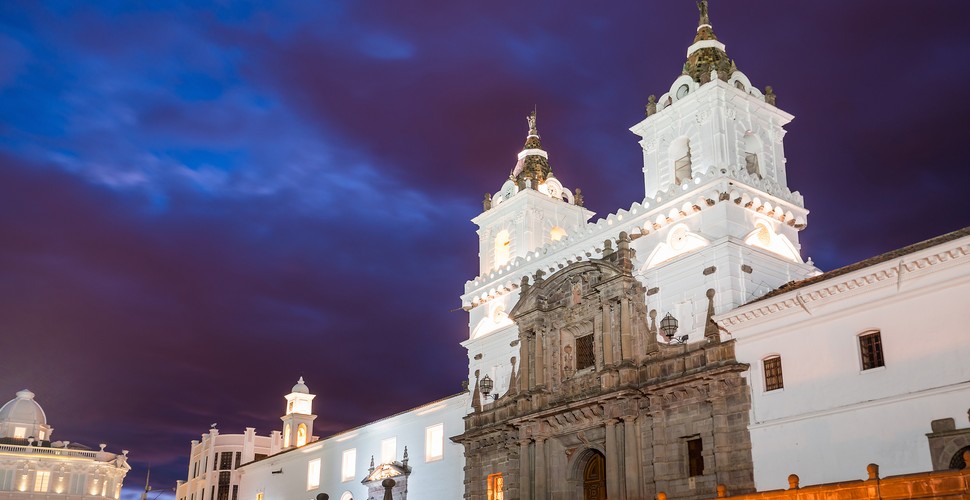
San Francisco Church and Convent
Otavalo
As Ecuador's largest indigenous market, the enterprising and prosperous Otavalan Indians sell local produce and handmade goods, including the high-quality textiles for which the region is known. It's a beautiful place to see traditional highland dress and culture and pick up souvenirs and gifts from stalls piled high with colorful handicrafts. Surrounding the town are clusters of rustic hamlets, each specializing in a different cottage industry, from leather to woodwork. Visit a few of these en route for a first-hand insight into the age-old crafting traditions and supply chains that fuel the Otavalo market.
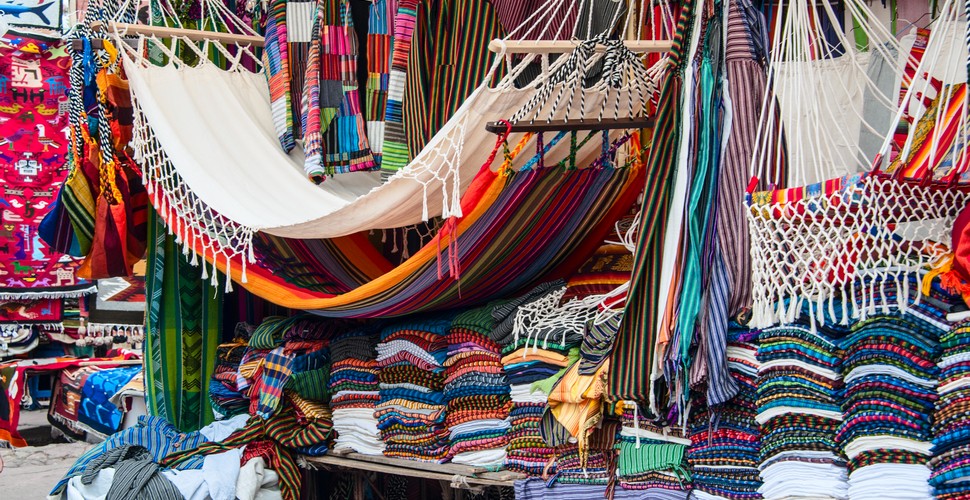
Otavalo Market
Guango Reserve
Guango Lodge is surrounded by 180 hectares of temperate forest with great mixed flocks of birds. Owned by the same family as San Isidro, Guango Lodge lies at a higher elevation of 2,700 meters on Ecuador's eastern slopes, close to the town of Papallacta. This area is centered in a zone classified as a humid temperate forest, a habitat characterized by its stunted trees and thick canopy, cooler climate, and different bird and plant composition. Guango is well known to birders for its Hummingbirds, with feeders discreetly placed around the small gardens of the lodge. It is possible to have fantastic views and photo opportunities of the 15 species of Hummingbirds that frequent the area. The nearby river is also home to the Torrent Duck and Dippers. Guango is one of the few sites on the east slopes of Ecuador's Andes that cater to birders, especially at its particular elevation. It is best known for the stunning variety of Hummingbirds that visit the feeders. These include Mountain Velvetbreast, Sword-billed Hummingbird, Tourmaline Sunangel, Golden-breasted, and Glowing Pufflegs, Mountain Avocetbill, amongst other hummingbird species.
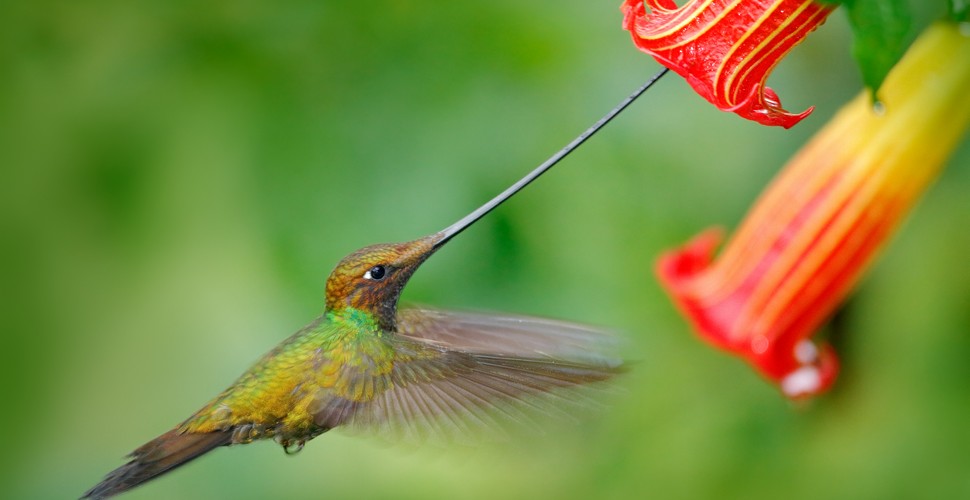
Guango Reserve
Amazon Homestay
As you plunge toward the jungle, the vegetation and climate are subtly transformed. The road twists and turns as it descends, the vegetation becoming more and more succulent as the temperature rises. The cool cloud forest gradually evolves into an even more exuberant rainforest, clinging to the hillsides that fringe the only road. Potholes and the vestiges of landslides may remind you that you are really off the beaten track here: you'll see the occasional car or jeep, and a truck may come rumbling by, but nothing obscures your magnificent views. In harmony with a more tropical environment, local people live in thatched homes on stilts, and luscious fruits are on sale from stalls beside the road. Watch giant otters duck and dive while you enjoy meals or drinks, or observe caimans gliding under the walkways.
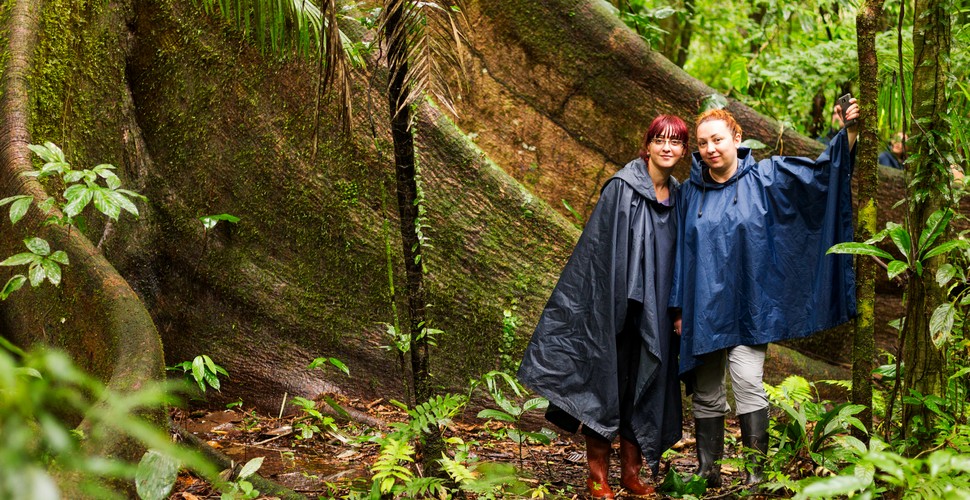
Ecuadorian Amazon
Baños
It is time to hike down to the "Pailon del Diablo" waterfall, the second highest in Ecuador. After that, you will hike through the tropical jungle and climb along several white-water waterfalls. Your local native guide will tell you more about the incredible nature and wildlife you can admire there. Pailon del Diablo, or 'devil's cauldron' in Spanish, is a mighty waterfall along this Amazonic route. This morning, you'll explore the lush landscape around the Pita River, following pathways formed by petrified lava. Make your way to the river's main waterfall, where you'll love cooling off beneath the refreshing mists. En route to Baños, this spectacular 61-kilometer road drops nearly 1,000 meters in elevation along the Pastaza Valley to the edge of the Oriente. There are almost a dozen waterfalls along the newly christened Ruta de las Cascadas, which has developed into a major tourist attraction with several cable cars across the valley and a range of adventure sports. Another impressive waterfall on the route is Manto de la Novia (Bride's Veil). Take the hair-raising cable car 500 meters across the gorge, from where you can take a short walk down to a viewing platform or a longer hike (20 minutes) down to the bottom of the gorge to stand at the foot of the waterfall. It's an awe-inspiring sight but also sobering. After Manto de Novia, it's 40 minutes farther to Río Verde, 18 kilometers from Baños, an emerging town with several hotels, small restaurants, and shops selling local crafts.
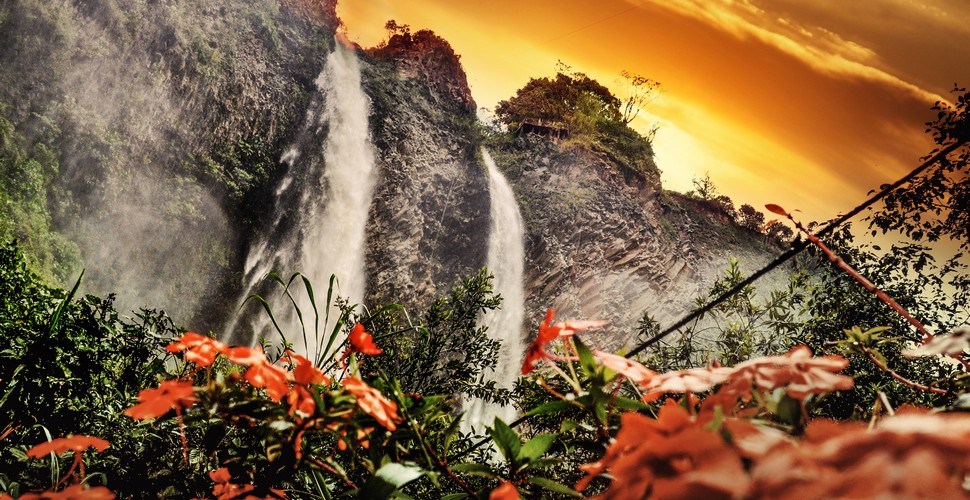
Manto de la Novia Waterfall
Chimborazo
Mount Chimborazo's claim to fame is its summit, the furthest from the center of the Earth. Maybe Chimborazo Volcano in Ecuador is not as famous as Mount Everest, K2, or the other giants of the Himalayas. Perhaps many people have never even heard of Chimborazo Ecuador. But scientists agree that the Chimborazo volcano's peak is the furthest point from the center of the earth's core and the closest point on earth to the sun. The volcano is surrounded by the Chimborazo Wildlife Reserve. This protected parkland covers an area of almost 60,000 hectares and is home to herds of wild vicuña. What is a vicuña? Imagine a small, cute relative of llamas and alpacas. They have lovely wool, said to be softer and lighter than cashmere.
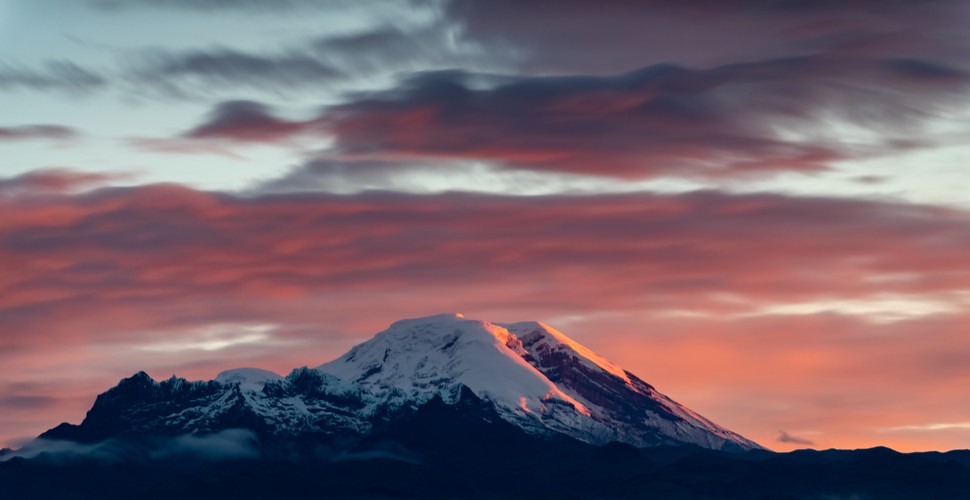
Chimborazo
Devil´s Nose/Ingapirca
Called the Most Difficult Train in the World, this train ride is one of Ecuador's most popular attractions. The railroad, originally built to connect the Andes with the Coast, goes up and down steep slopes and along river valleys, crossing a wall of rock known as the Devil's Nose. This train leaves from Alausí, a pretty town with adobe houses. Inca Cañari Ingapirca Ruins are located about 1 hour 45 minutes from Cuenca; it is the most important archaeological site in Ecuador and represents essential evidence of Incan presence in the country. It was built at the end of the XV century in an area previously occupied by the Cañari culture, and it stands over what was once a moon-worshipping site. The main structure is the Temple of the Sun, which was used for ceremonial and religious purposes.
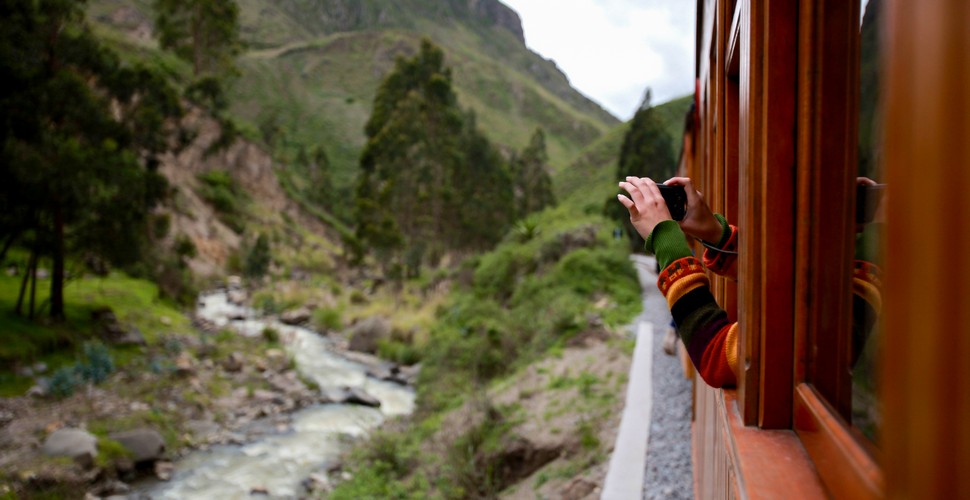
Devil's Nose
Cuenca
Cuenca, another UNESCO World Heritage site in Ecuador, boasts cobblestone streets, graceful wrought-iron balconies, and flower-filled plazas to captivate you. This city is home to the famous Panama hats and to very talented people who will proudly show you their best work. The best archaeological exhibits are at the Museo del Banco Central, which also displays old photos and has changing art and other shows. "The Museo de Las Conceptas" is housed in the Convent of the Immaculate Conception and is Cuenca's most famous religious art museum.
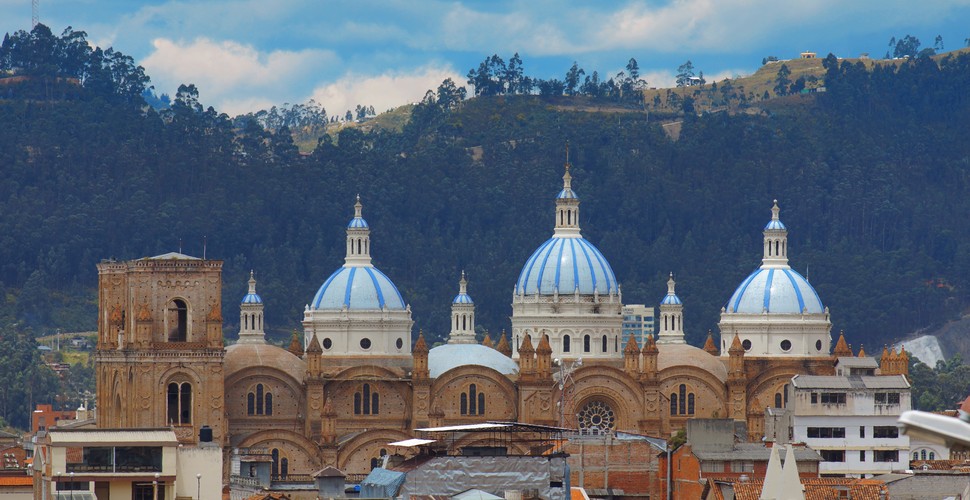
Cuenca Cathedral
Book this impressive 10-day journey from the Andes to The amazon with Va Expeditions here






